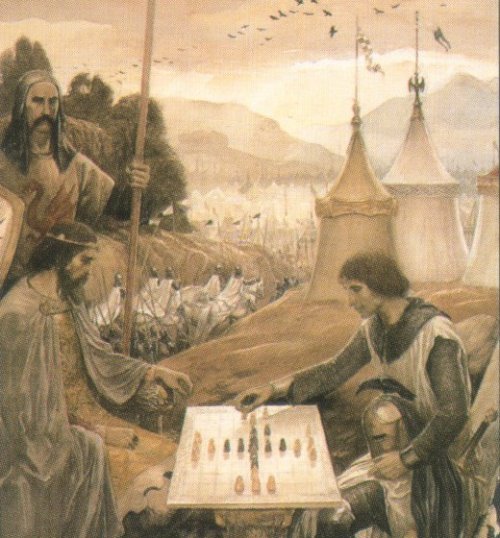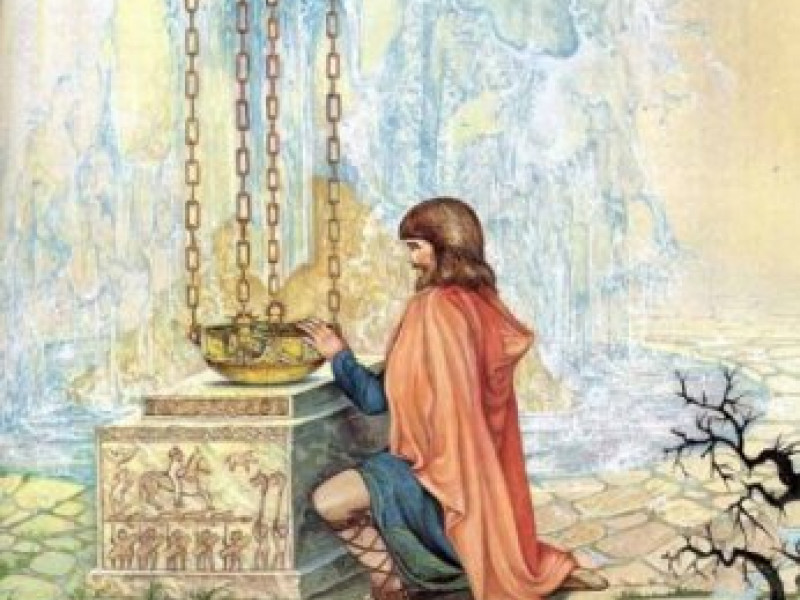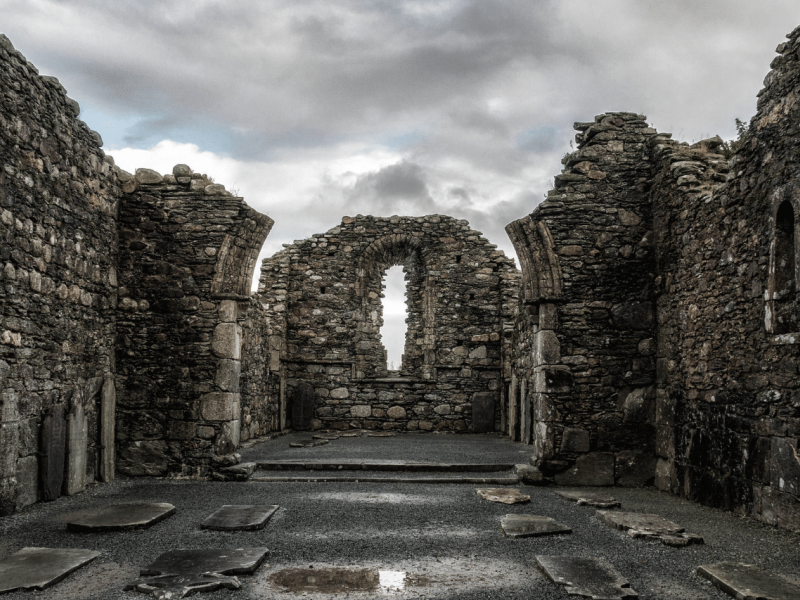The Dream of Rhonabwy
Like Culhwch and Olwen, the Dream of Rhonabwy was an independent tale of Arthur which had no influence from outside of Wales.
Madawg, the son of Maredudd, ruled Powys, a northern kingdom in Wales. His brother Iorwerth was distressed and envied his brother's power, yet refused to accept any office and honour his brother. Iorwerth took his armed followers in a series of raiding campaigns throughout England. Madawg set out men to find his brother.
In Didlystwn, a tiny town in Rhychdir, a group of Madawg's men sought shelter at the house of Heilyn the Red, the son of Cadwgawn son of Iddon. These men were Rhonabwy, Kynwrig the Red Freckles from Mawddwy, and Cadwgawn the Stout from Moelvre in Kynlleith.
The house of Heilyn the Red was run down and filthy. The famous Celtic hospitality was not in evidence, for their host reluctantly welcomed his guests almost to the point of being rude. Rhonabwy and his companions ate a joyless meal before retiring for the night. While his two companions slept on uncomfortably filthy, flea-ridden pallets, Rhonabwy decided to sleep on a yellow ox-skin on a platform.
Once Rhonabwy fell asleep, he dreamt of crossing the plain of Argyngrog with his companions when they encountered a rider in green and yellow outfit, armed with a sword. The rider had curly hair and a neatly trimmed beard, and rode on a yellow horse. When they saw his countenance, Rhonabwy and his companions fled in fear, but the strange and fearsome rider overtook them. They pleaded for mercy, which the rider granted.
The rider's name was Iddawg son of Mynyo, but he was known as Iddawg the Churn of Britain. He received the name when he delivered messages for Arthur to his nephew Medrawd (Mordred) during the Battle of Camlann; instead of repeating Arthur's words in a gentle and kind manner to Medrawd, Iddawg told repeated the message in the rudest possible way. Iddawg was punished and had to pay penance at Y Llech Las in Scotland.
Iddawg acted as a guide to Rhonabwy and his companions. Iddawg identified for Rhonabwy other riders in outlandish outfits and armed forces from various kingdoms with colourful uniforms and strange banners. Among the men they met in Rhonabwy's strange dream was Emperor Arthur. Arthur was saddened that Britain was defended by puny men, like Rhonabwy and his companions. Some of the characters Rhonabwy met or saw, could be identified with knights in mainstream Arthurian legend – such as Kei with Sir Kay, the most handsome man in Britain; Cadwr Earl of Cornwall with Duke Cador of Cornwall, Arthur's sword-bearer, and Owein son of Uryen with Sir Yvain.
Arthur and his men were preparing for the Battle of Baddon (Mon Badon), against Osla Big Knife. Yet Arthur seemed to be involved in a strange encounter with Owein. Owein agreed to play a board game with Arthur called gwyddbwyll. While they played gwyddbwyll, a messenger in strange armour and outfit arrived for Owein, saying that Arthur's squires and pages were fighting and killing Owein's ravens. Owein asked Arthur to call his men off, but Arthur would only reply "Your move." They would shortly finish a game of gwyddbwyll, and begin a new game.
Twice more, two different messengers would deliver a message on how the ravens were badly faring, Owein would ask Arthur to call off his men, but Arthur would only give the same reply to Owein – "It's your move." – before beginning a new game. With the last message, Owein told his third messenger to raise a standard where the fighting was fiercest.
The tide of the strange battle between Owein's ravens and Arthur's squires and pages began to turn in Owein's favour. This time, the ravens were winning: killing and molesting the Arthur's squires and pages. This time, messengers came for Arthur about the news that the ravens were defeating his men. Now it was Arthur who asked Owein to withdraw his ravens, and it was Owein who told his gwyddbwyll opponent: "It's your move, my lord." They would continue with the game of gwyddbwyll.
With Arthur's third message, the king told Owein to call off his ravens, and Arthur ended the game by grinding the gwyddbwyll gold men into dust. Only then did Owein ask his banner to be lowered, ending the fight between the men and ravens. Iddawg identified the six messengers for Rhonabwy who appeared during the gwyddbwyll games.
Then Osla Big Knife arrived with 24 knights, asking for a truce from Arthur. Arthur sought advice from his advisers; among them were Gwalchmei (Gawain) son of Gwyar, Drystan (Tristan) son of Tallwch, Howel (Hoel) son of Emphyr from Brittany, and other warriors found in the tales of Culhwch and Olwen. Arthur granted Osla Big Knife a truce for a month and a fortnight.
Then Rhonabwy woke and found out that he and his companions had slept for three days and three nights.
By Jimmy Joe






